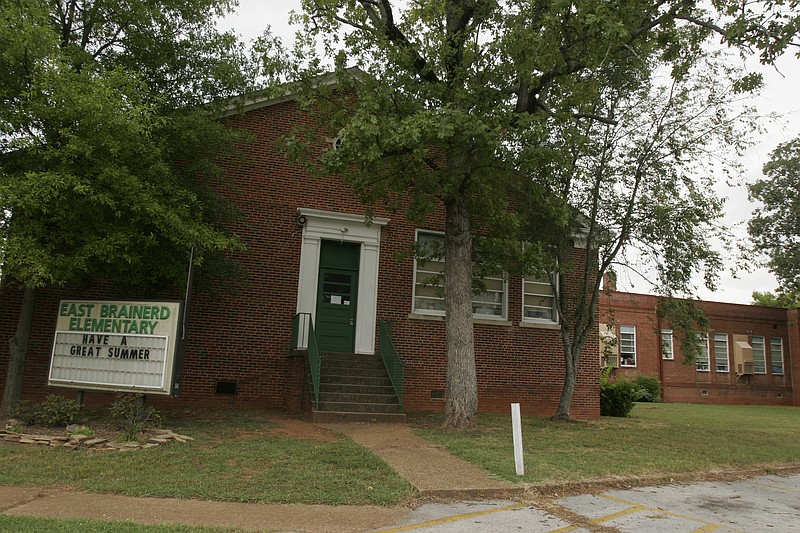We hope for a different outcome, but another pitched battle could be ahead for the disposition of funds from the upcoming sale of a Hamilton County Schools building.
On Thursday, the Hamilton County Board of Education voted to accept a $4.5 million offer by Legends Holdings for the former East Brainerd Elementary School building on East Brainerd Road.
School board attorney Scott Bennett said the school district will realize a net gain of $4.1 million from the property. That, in itself, is remarkable since just eight months ago school officials said they expected to get about $2.7 million for the property.
But it's how the proceeds are spent that may get contentious.
In February 2015, Hamilton County commissioners voted to divvy up the proceeds from the sale of the old East Brainerd Elementary building and use the money to cover school projects in their districts.
The move was tacked onto a resolution allowing Hamilton County Mayor Jim Coppinger to move $2.2 million from the sale of the old Ooltewah Elementary School to the general fund and spend the same amount in bond funds to buy security cameras for all county schools.
The resolution states that money from the East Brainerd Elementary sale will be equally distributed across the county's nine districts "to pay for the needs in the various schools."
Typically, the Hamilton County Board of Education or system officials decide what those needs are but not this time. With these proceeds, commissioners "in coordination with their respective school board members" will direct the funds.
However, the school board, in discussion Thursday, appeared to believe the money will be - for the most part - at their discretion.
Board member Greg Martin said he hoped the funds could go into an account designated for capital improvements for schools, and Chairman Jonathan Welch said when the deal is finalized in the coming months the board should have a discussion about the disposition of proceeds.
Yet, on Friday, Martin said the 2015 County Commission resolution and board members may be talking about the same thing.
"I think we are," he said. "I'd love to see [the funds] used in capital maintenance. I want to see something across the county, in every district, that people can be proud about - not lost in the black hole of the fund balance."
Martin said Bennett told him the projects they want to fund may have to be listed in a budgeted item for the County Commission but that we could "spend that money however the school board sees fit."
"In my perfect world," he said, "we would sit down with principals and have them tell us what's important, what [they] want to do. They could make some suggestions we could filter through. Those people know more. They have boots on the ground. I don't want to do anything without their [input]."
East Brainerd Elementary, like the old Ooltewah Elementary and most others, is owned by the school district. Some schools are owned by the county, and a few are jointly owned.
In a 2012 agreement, all new buildings are titled jointly between the school system and county government. Revenue from future property sales was to be placed in a special account to be spent on school capital improvements with the commission's approval.
The disposition of funds involving the old East Brainerd Elementary has been kicking around since at least 2012, three years before it even closed. In fact, the new East Brainerd Elementary even opened a year later than originally planned for several reasons, one being a delay in the architect selection process. According to Times Free Press archives, one reason for the delay in the architect selection process was the inability of the school board and the County Commission to decide on who would get the funds from the old school.
In the final analysis, what's important is that funds are used for the schools and not for their operations and not for the district's rainy day fund. Schools, several of which are approaching a century in age, are backed up on maintenance projects and could use the care. Whatever the process, it's important that the County Commission and the school district be on the same page. The school district and board should determine the best use of their money, and county commissioners - who hold the purse strings - should see they get it. A windfall of $4 million won't fix everything, but it can finance a lot of shoring up.
